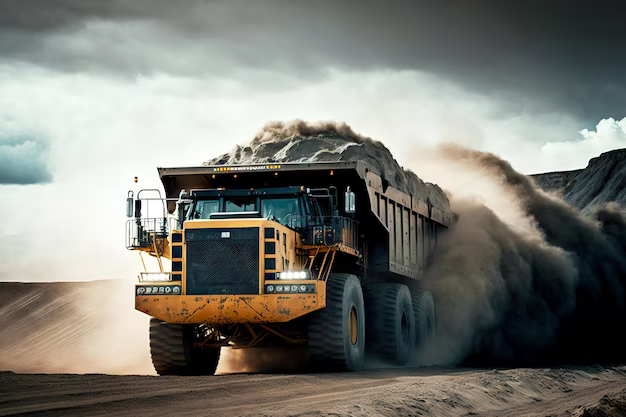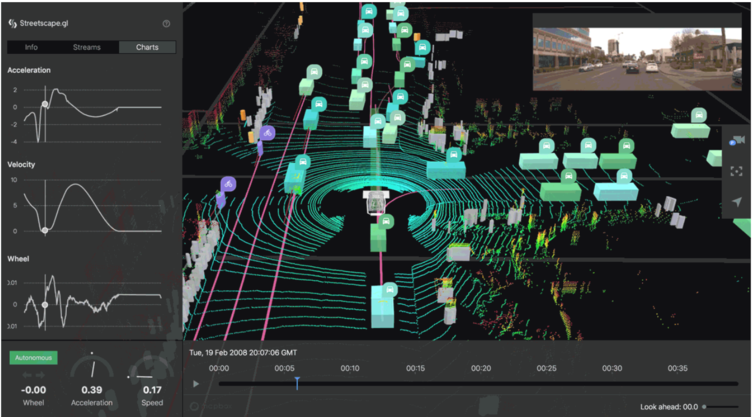
Abstract
Based on my extensive experience in working with ADAS (Advanced Driver Assistance Systems) and multi-level autonomy, I have always been driven to devise an optimal and efficient self-cleaning solution for autonomous vehicle sensors and systems. This solution would be specifically designed for the challenging conditions present at mining sites and would incorporate cutting-edge technologies that are innovative and emerging in the field.

In this article, I aim to provide an overview of our commitment to developing self-cleaning systems for autonomous vehicle sensors. I will highlight the advantages of such systems and discuss the feasibility of implementing various technologies to achieve this goal. By focusing on this important aspect, we aim to address the challenges faced by autonomous vehicles operating in demanding environments, such as mining sites, and ensure their sensors remain clean and fully functional throughout their operation.
Intention
In the context of autonomous vehicles operating at mining sites, the introduction of a self-cleaning system and sensors is crucial to address the issue of costly downtime. Mining sites are known for their harsh and rugged environments, where vehicles are exposed to various contaminants such as dust, dirt, mud, and debris. Over time, these contaminants can accumulate on the vehicle’s sensors, cameras, and other critical components, impairing their performance and compromising the safety and efficiency of the autonomous system.
Without a self-cleaning system, the accumulation of dirt and debris on the vehicle’s sensors can lead to inaccurate readings and reduced situational awareness. This can result in navigation errors, decreased object detection capabilities, and even potential collisions or accidents. Moreover, the build-up of contaminants on mechanical parts can lead to increased wear and tear, affecting the vehicle’s overall reliability and lifespan.
Reason Behind the Need of Self-Cleaning Sensor Systems For Mining Sites
At mining sites, autonomous vehicle sensors are subject to several environmental factors that can impact their performance.

These include:
· Dust and dirt: Mining operations generate significant amounts of dust and dirt, which can accumulate on sensor surfaces and obstruct their view or interfere with signal transmission.
· Rock or debris particles: Loose rocks or debris present at mining sites can potentially impact sensors or cause physical damage, leading to degraded performance or even sensor failure.
· Harsh weather conditions: Mining sites often experience extreme weather conditions, including high winds, intense heat, or heavy precipitation. These conditions can affect sensor operation and accuracy, especially for sensors sensitive to temperature or prone to water damage.
· Vibrations and mechanical stress: Mining activities involve heavy machinery and dynamic movements, which can generate vibrations and mechanical stress that may impact sensor alignment or damage sensitive components.
· Chemical exposure: Mining sites may have exposure to corrosive substances or chemicals that can potentially damage sensor casings or sensitive components, leading to sensor malfunction.
It is crucial to develop robust sensor cleaning and protection mechanisms to mitigate the impact of these environmental factors and ensure reliable sensor performance in mining site operations.
Autonomy Levels and Self-Cleaning Technology Matrix
It is widely recognized that vehicles incorporate numerous essential sensors, such as cameras, LiDARs, Radar sensors, GNSS, RF devices, and more. Unfortunately, these sensors are susceptible to obstructions and coverings that significantly hinder their performance. To ensure their optimal functionality, regular cleaning is necessary. However, relying on manual cleaning methods can be problematic, particularly in terms of productivity at sites and associated costs. Therefore, it is imperative to develop automated and efficient cleaning approaches to maintain the proper operation of these sensors.
Based on the analysis of the market report, it is essential to emphasize the need for a self-cleaning approach and the autonomy levels.

Methods and approaches
By implementing a self-cleaning system, autonomous vehicles can proactively and autonomously maintain their cleanliness, ensuring optimal performance and reducing the need for costly downtime. These systems typically utilize traditional and advanced technologies with respect to the levels of autonomy. The technologies and approaches are as follows:
1. high-pressure water jets, air blowers, brushes, or even robotic arms to remove dirt and debris from the vehicle’s surfaces, sensors, and critical components.
2. Protective Materials
3. Aerodynamics related
4. Advanced technologies like Ultrasonic cleaning, anti-fogging, etc
The self-cleaning system can be programmed to perform regular cleaning cycles based on predetermined intervals or triggered by specific conditions such as decreased sensor accuracy or reduced performance. This proactive maintenance approach minimizes the accumulation of contaminants, allowing autonomous vehicles to operate at their full potential for extended periods without interruptions.
Autonomy Sensors Self-Cleaning Technology References:
Various companies in the autonomous driving industry, including dlhBowles, Ficosa, Valeo, and Continental, have successfully integrated specialized cleaning systems for cameras. Additionally, Waymo and Valeo have implemented cleaning systems for LiDAR sensors. While washers are commonly utilized as the primary cleaning method for sensors, subsequent residue removal is typically achieved through the application of air, wiper, or electric mechanisms.
Air Type
One of the most prevalent approaches to sensor cleaning is the air-type method, known for its effectiveness in removing residues and clearing obstructions on the camera surface or LiDAR window. This technique involves using a high-pressure air spray to blow away the contaminants..
Wiper Type
To address residual blockages that may persist even after using a washer, a wiper-type cleaning system proves effective. This system employs a wiper that makes direct contact with the obstructed area, ensuring efficient removal of the blockage. This method is particularly advantageous in effectively eliminating persistent blockages.
Electric Type
Piezo and electrowetting methods are commonly employed for sensor cleaning. In the piezo method, an electric current is applied to a piezoelectric element, utilizing its physical vibration to dislodge residual water droplets. On the other hand, electrowetting involves altering the shape of residual water droplets by applying voltage, effectively removing them. These techniques offer effective means of addressing water droplet residue on sensors.
Benefits:
The benefits of a self-cleaning system for autonomous vehicles in mining sites are manifold.
1. Firstly, it reduces the need for manual cleaning, saving significant time and labor costs.
2. Secondly, it helps maintain optimal sensor performance, ensuring accurate data collection and processing for reliable autonomous operations.
3. Thirdly, by preventing excessive wear and tear caused by contaminants, the self-cleaning system extends the lifespan of vehicle components, reducing maintenance and replacement costs.
Closing Index
In conclusion, the implementation of a self-cleaning system is essential for autonomous vehicles deployed at mining sites. It not only ensures the continuous and reliable operation of the vehicles but also minimizes costly downtime by proactively addressing the challenges posed by environmental contaminants.
By investing in such a system, mining companies can optimize the efficiency, safety, and longevity of their autonomous vehicle fleets.
References:
1. https://www.mdpi.com/1424-8220/23/5/2752
2. https://www.netscribes.com/sensor-cleaning-and-autonomous-vehicles/
3. http://www.diva-portal.org/smash/get/diva2:1371223/FULLTEXT01.pdf


